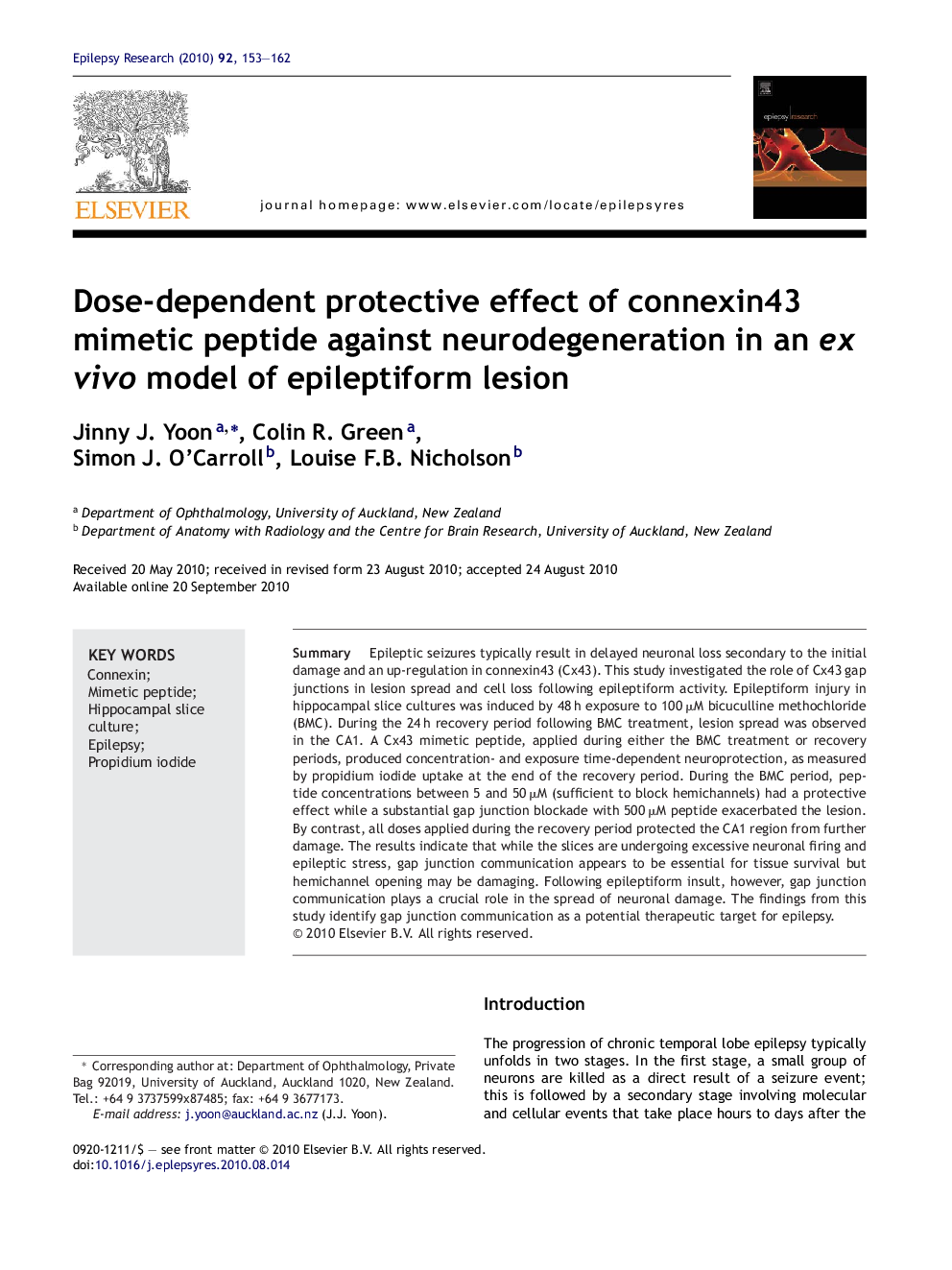| Article ID | Journal | Published Year | Pages | File Type |
|---|---|---|---|---|
| 3052496 | Epilepsy Research | 2010 | 10 Pages |
SummaryEpileptic seizures typically result in delayed neuronal loss secondary to the initial damage and an up-regulation in connexin43 (Cx43). This study investigated the role of Cx43 gap junctions in lesion spread and cell loss following epileptiform activity. Epileptiform injury in hippocampal slice cultures was induced by 48 h exposure to 100 μM bicuculline methochloride (BMC). During the 24 h recovery period following BMC treatment, lesion spread was observed in the CA1. A Cx43 mimetic peptide, applied during either the BMC treatment or recovery periods, produced concentration- and exposure time-dependent neuroprotection, as measured by propidium iodide uptake at the end of the recovery period. During the BMC period, peptide concentrations between 5 and 50 μM (sufficient to block hemichannels) had a protective effect while a substantial gap junction blockade with 500 μM peptide exacerbated the lesion. By contrast, all doses applied during the recovery period protected the CA1 region from further damage. The results indicate that while the slices are undergoing excessive neuronal firing and epileptic stress, gap junction communication appears to be essential for tissue survival but hemichannel opening may be damaging. Following epileptiform insult, however, gap junction communication plays a crucial role in the spread of neuronal damage. The findings from this study identify gap junction communication as a potential therapeutic target for epilepsy.
